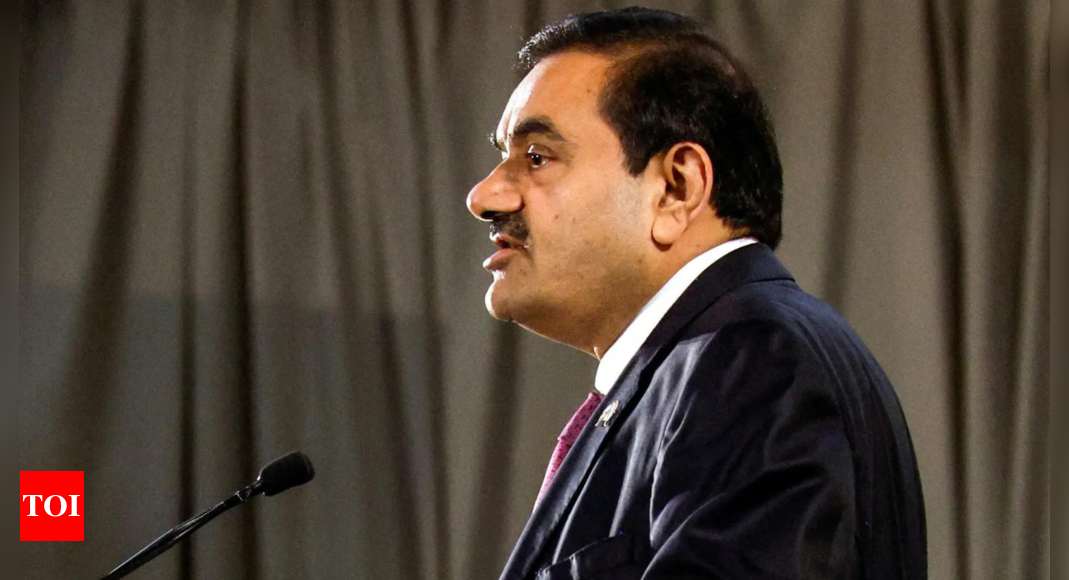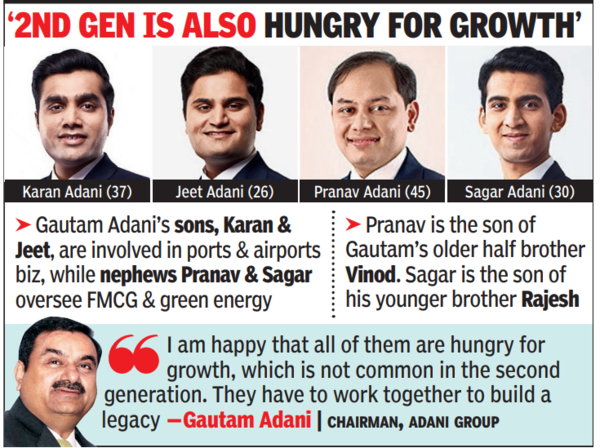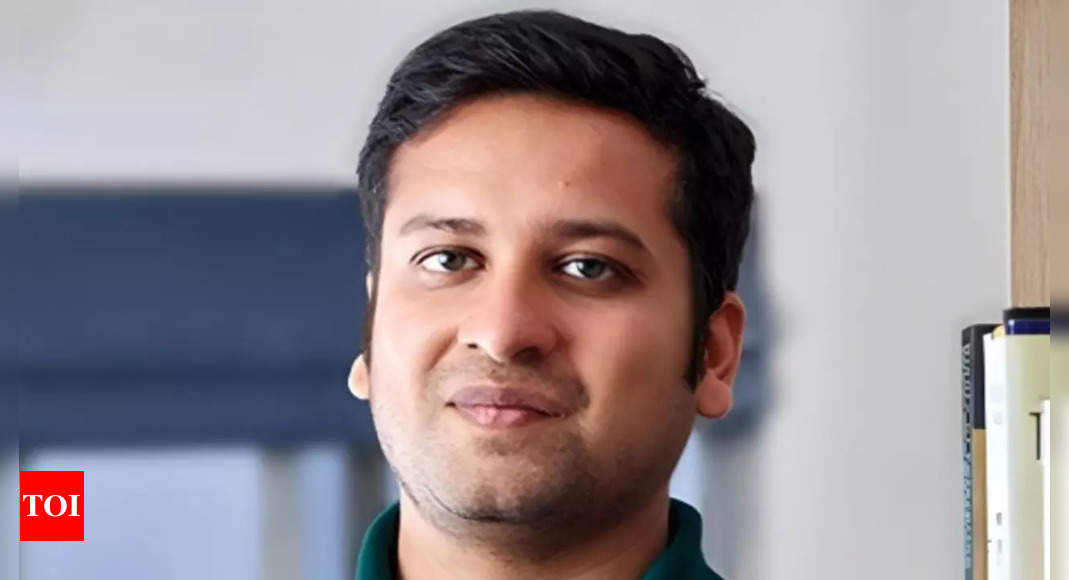
However, challenges of a four-way leadership structure, political scrutiny, legal and reputational risks could impact the conglomerate’s long-term sustainability, the report says.
Gautam’s sons, Karan (37) and Jeet (26), are involved in the ports and airports businesses, while his nephews, Pranav (45) and Sagar (30) oversee the FMCG and green energy portfolios. Pranav is the son of Gautam’s older half brother Vinod Adani and Sagar is the son of his younger brother Rajesh Adani.

Pranav and Karan seem to be the obvious candidates to succeed Gautam as chairman, however, both told Bloomberg that there are no plans for either to take charge. When Gautam retires, his four heirs will become equal beneficiaries of the family trust. A confidential agreement will dictate the transition of stakes in the conglomerate’s firms to the heirs, the report said. The group’s various companies are controlled by the family through special purpose vehicles, overseas entities, family trusts, and domestically incorporated entities.
“Transfer of management and wealth across generations for a group like Adani will be complex and a timedrawn process,” said Nirmalya Kumar, a professor at Singapore Management University’s Lee Kong Chian business school. “How they are holding and controlling the wealth is a black box.”
Karan said the structures have been simplified over the years to avoid “criss-cross holdings” and the family now holds stakes in each business directly. Gautam emphasised the importance of succession for business sustainability and continuity, saying, “I left the choice to the second generation as the transition must be organic, gradual and very systematic.” Early 2018, Gautam—Asia’s second richest man with a fortune of more than $100 billion—had asked his sons and nephews whether they wanted to carve up the group between them and part ways. The scions told him that they wanted to run the infrastructure conglomerate together as a family, even after his departure.
This creates a four-way leadership structure that splits management of the businesses but requires the heirs to work together. When the founder does step back, the joint decision-making will continue, the scions told Bloomberg, even in the event of a crisis or a major strategic call. They brushed off questions about the challenge of collective decision-making. “Though each of us are looking at different businesses, we are like one team,” Pranav was quoted as saying in the report. Jeet said: “All four of us instinctively knew that we’d have to stay together as we grew up seeing our fathers working together.”
But without any formal hierarchy, business management will almost certainly be testing and time-consuming.
All four heirs say risk containment has been a bigger focus following the Hinde








